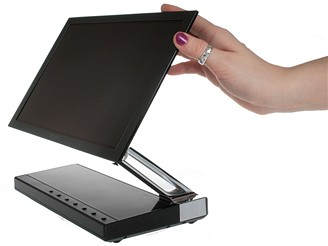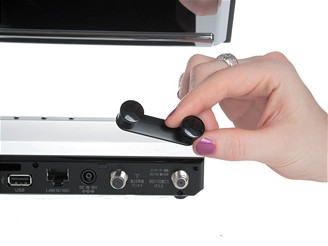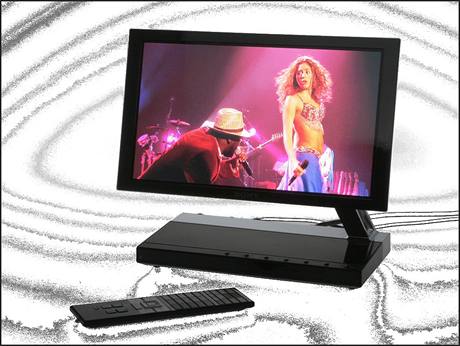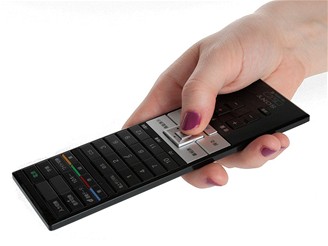A certain disappointment is the formally low resolution of the display. In the era of Full HD screens, the 960 x 540 pixels do not strike one as particularly “high-tech”. Yet, actually, the resolution is more than sufficient, because, considering the short diagonal dimension, the density of picture elements is rather high.

Sony XEL-1 OLED TV in frontal view
During the test, the television set managed to process any HD signal up to 1080p, though it had to downscale the signal to its native resolution. All inputs through HDMI worked smoothly, except for a PC interface.
When a graphics card was plugged-in, a problem occurred; with the 1920 x 1080 resolution, only the middle part of the picture was visible, while the rest outstripped the screen. It was thus required to set the PC to the atypical 1350 x 666 pixels resolution. Yet, even then, not everything was trouble-free: Windows Vista, of course, could not find the device’s driver, and so it allowed only for the 60 Hz picture frequency. And the effect thereof is as disturbing with the OLED screen as it would be with a CRT one – the display blinks.
Nokia Monitor Test then revealed top-quality features of the display – perfectly balanced brightness, saturated colors, flawless geometry and no moiré patterns or any other common faults.
The viewing angles were entirely unlimited (in front of the display, obviously). Likewise, perfect results were obtained in a very bright room (filled with Sunday’s sunlight); reflections were rather minor and contrast remained still quite good.
Naturally, we paid the closest attention to the image received from a HD generator and a Blu-ray player. In the first case, the picture (with an optimal setting) is absolutely superb - with perfect sharpness and color space; saturated, rather warmer colors; excellent contrast; and smooth image motion in all directions. When watching a feature film on Blu-ray, the deficiencies of the film stock itself, namely its grain, taint the impression slightly.
The television set has 45W power consumption when running, 0.8W when on standby. While the display itself remained permanently cool, the base containing the electronics heated up to a rather high temperature after several hours of operation. Evidently, the processing of the signal is demanding on the computing.

Japaneese menu: picture control
For the time-being, XEL-1 costs some 45 000 Czech crowns, after conversion, which is quite overpriced for an 11" display. On the other hand, it costs significantly less than the first LCD and plasma panels. Owing to a simpler production process, one can expect the OLED televisions to become attractive even pricewise in the years to come.

 Photogallery PhotogalleryMore photos and informations in article here. |







